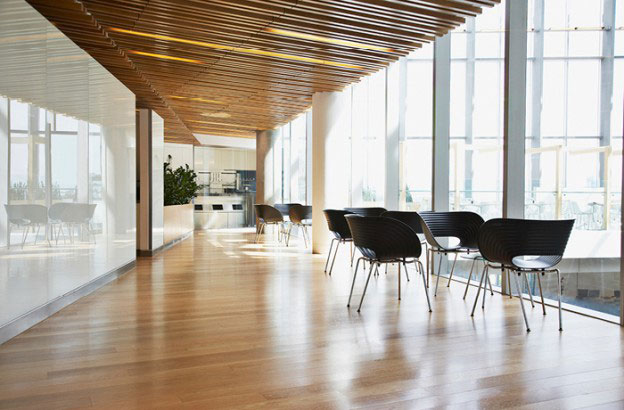Oct 07, 2015

Green floor care has several components and is essential in maintaining a green floor or any floor in which the goal is to reduce cleaning’s impact on the environment. In essence, we can define green floor care accordingly:
Green floor care is a comprehensive system approach to floor maintenance that includes all the chemicals, tools, equipment, and related products used to clean, maintain, strip, and refinish a floor.
By saying it is a “system approach,” we mean that the floor and its maintenance are only as green as the products used. If, for instance, a non-green stripper is used, we no longer have a green floor care program in place, even if all the other chemicals, tools, and equipment are green.
The key components of a green floor care program include the following:
Vacuuming: When dust mopping, some dust and other contaminants can become airborne, negatively impacting indoor air quality. A backpack with a high filtration filter can eliminate this, plus vacuuming the floor actually pulls – vacuums up – dust and soils from the pores of the floor, resulting in a more effective cleaning.
Chemicals: It is essential to use green floor care products, and it is often a wise idea to use the same green products from the same manufacturer. The reasons for this are many, but key is that many green floor care products from the same manufacturer have a synergy – they are designed to work together. The result often is better product performance, and using a certified stripper, finish, and cleaner typically translates into reduced costs, less work, and a greener environment.
Equipment: In general, green floor care equipment refers to machines engineered to be more sustainable and use water and chemicals more effectively than older or more conventional floor machines. They are designed to have built-in vacuum or “dust control” systems or “emissions packages” to help capture the dust generated in floor care work, keeping it from becoming airborne. Further, the batteries should be safer and more environmentally responsible than conventional or older batteries.
One further component of green floor care that cannot be overlooked is worker training. Cleaning professionals must understand how to use green equipment, chemicals, and tools to help ensure that they not only are used properly, but also are used in a way that reduces the impact of the cleaning process on the environment, and the health of the cleaning worker and all building users.